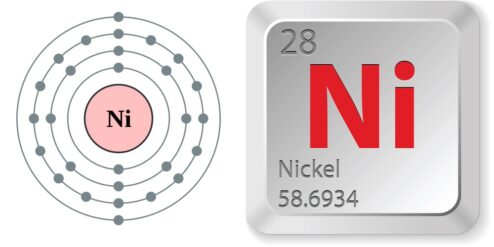Nickel is a naturally occurring element found in many food products. Though it is essential in trace amounts, excessive consumption can lead to health issues. One food product that has been under scrutiny for its nickel content is peanut butter. This article aims to shed light on the presence of nickel in peanut butter, its potential health effects, and ways to limit its intake.
Understanding Nickel in Food Products
Nickel is a trace mineral found in the soil and water, which is absorbed by plants and subsequently enters our food chain. It is present in varying amounts in different food products, depending on the nickel content of the soil where the plants were grown. While nickel is necessary for certain bodily functions, excessive intake can lead to nickel allergy or systemic nickel allergy syndrome (SNAS).
In food products, nickel can be present in two forms: organic and inorganic. Organic nickel is generally considered safe for consumption as it is easily processed and excreted by the body. In contrast, inorganic nickel, often found in processed foods, can accumulate in the body and cause health issues.
Peanut Butter: A Closer Look at Its Composition
Peanut butter is a popular food product made primarily from peanuts. It is rich in protein, healthy fats, and various vitamins and minerals. However, like all plant-based foods, peanuts absorb nickel from the soil, which can subsequently be found in peanut butter.
The nickel content in peanut butter can vary based on factors such as the type of soil the peanuts were grown in, the processing methods used, and the type of additives included. For instance, peanut butter made from organically grown peanuts may have lower nickel content compared to those made from conventionally grown peanuts.
Unveiling the Presence of Nickel in Peanut Butter
Several studies have been conducted to determine the presence of nickel in peanut butter. These studies have confirmed that peanut butter does contain nickel, although the amount can vary. The nickel in peanut butter comes from the peanuts themselves, which absorb the mineral from the soil.
The processing of peanuts into peanut butter can also contribute to its nickel content. For instance, the use of nickel-plated machinery during processing can lead to increased nickel levels in the final product. However, it’s important to note that the nickel content in peanut butter is generally considered safe for most individuals.
How Much Nickel Can You Find in Peanut Butter?
The exact amount of nickel in peanut butter can vary based on the factors mentioned earlier. However, on average, peanut butter is estimated to contain around 0.25 to 0.75 micrograms of nickel per gram. This means that a typical serving of peanut butter (about two tablespoons) could contain anywhere from 3.5 to 10.5 micrograms of nickel.
While this may seem like a small amount, individuals with nickel allergy or SNAS may experience symptoms even with this level of exposure. Therefore, it’s important for these individuals to be aware of the nickel content in peanut butter and other food products.
Potential Health Effects of Nickel in Peanut Butter
While the nickel content in peanut butter is generally considered safe for most individuals, those with nickel allergy or SNAS may experience adverse effects. Symptoms can range from skin rashes and itching to more severe reactions like gastrointestinal issues, chronic fatigue, and headaches.
Long-term exposure to high levels of nickel can also lead to more serious health issues like kidney damage, lung cancer, and heart disease. Therefore, it’s crucial to monitor your nickel intake, especially if you consume peanut butter regularly.
Ways to Limit Nickel Intake from Peanut Butter
If you’re sensitive to nickel or want to limit your intake, there are several strategies you can adopt. Firstly, choose peanut butter brands that use organically grown peanuts, as these tend to have lower nickel content. Secondly, limit your portion sizes. Consuming smaller amounts of peanut butter can help keep your overall nickel intake in check.
You can also opt for alternatives to peanut butter, such as almond butter or sunflower seed butter. These alternatives typically have lower nickel content compared to peanut butter. Lastly, maintaining a balanced diet can help ensure that your nickel intake from all sources stays within safe limits.
Nickel is a trace mineral that is present in varying amounts in different food products, including peanut butter. While it is generally safe for most individuals, those with nickel allergy or SNAS need to be cautious. By choosing low-nickel food products, limiting portion sizes, and maintaining a balanced diet, you can effectively manage your nickel intake.
Per approfondire:
- Nickel in Foods and the Diet: This scientific article provides a comprehensive overview of the presence of nickel in various food products and its impact on health.
- Nickel Allergy: Mayo Clinic provides detailed information on nickel allergy, its symptoms, causes, and treatment.
- Dietary Nickel as a Cause of Systemic Contact Dermatitis: This study explores the link between dietary nickel and systemic contact dermatitis.
- Nickel in the Human Diet: This research paper provides an in-depth analysis of nickel content in various food items.
- Nickel in Drinking-water: This World Health Organization document provides information on the presence of nickel in drinking water and its health effects.


